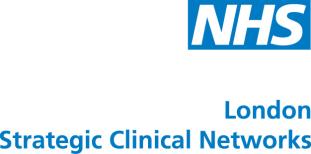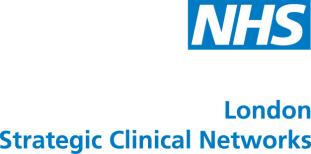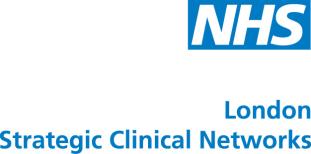Thewig.eu

Consensus approach to the diagnosis of Type 2 diabetes
The London Diabetes Strategic Clinical Network recommends that a consensus approach
to the diagnosis of type 2 diabetes be reached across London to ensure cross boundary
differences in diagnosis are removed. Consistent with many CCGs across London and in
line with the World Health Organisation1,2, Diabetes UK3,4 and NHS Health Check
recommendations, we recommend the adoption of HbA1c for the diagnosis of type 2
diabetes mellitus* across London.
Background
Type 2 diabetes is a condition affecting 3.2 million (6%) of the UK population5, 6 and 418,346 across
London7 with an additional 84,108 people currently undiagnosed in London7, 8. A study conducted in
2011 by the Clinical Effectiveness Group in Queen Mary's University reviewed 519,288 GP records in
patients aged 25-79. This identified that 1 in 10 had a 20% risk of diabetes over the next 10 years9.
The total cost (direct care and indirect costs) associated with diabetes in the UK currently stands at
£23.7 billion and is predicted to rise to £39.8 billion by 2035/65.
The aim of diagnosing type 2 diabetes is to prevent premature mortality and prevent complication-related morbidity10. Methods of diagnosis for type 2 diabetes mellitus need to have high sensitivity, specificity and accuracy. Various diagnosis methods exist including glycated haemoglobin (HbA1c) and fasting glucose4. Both of these methods have advantages and disadvantages and diagnose slightly different cohorts of people. Historically fasting glucose has been primarily undertaken.
Rationale
In 2011, the World Health Organisation (WHO) concluded that HbA1c can be used as a diagnostic test for diabetes as long as stringent quality assurance tests are in place and assays are standardised to criteria aligned to the international reference values, and that there are no conditions present which preclude its accurate measurement1. Since the publication of the WHO consultation, a number of organisations have moved towards using HbA1c for diagnosis where standardisation of HbA1c measurement has been achieved. This has increased the convenience of sampling, reduced the need for fasting and preceding dietary preparation, and avoids the problem of day to day variation in glucose levels1.
Both nationally and internationally there continues to be debate around which diagnostic test is preferred. To date, consensus regarding the most appropriate method of diagnosis has not been reached. Advice from the WHO is that choice of diagnostic method depends on local considerations for example cost, availability of equipment, population characteristics and presence of a national quality assurance system1.
The London Picture
Approximately 60% of all Clinical Commissioning Groups (CCGs) across London currently use HbA1c in preference to fasting glucose for the majority of patients11, whereas 40% have no preference and leave it up to clinician discretion. This creates problems when patients move across practices, CCG boundaries and care pathways and why this consensus statement has been developed. Although the reagent costs for HbA1c tests are higher, when other costs such as the cost of oral glucose tolerance tests are factored in, both in the short and longer term, the use of HbA1c is more economical as part of the screening and diagnostic pathway 12.

Flow chart 1 – Recommended cut off points for diagnosis of type 2 diabetes mellitus using HbA1c and interventions1,2,4,10,13
Suspected type 2 diabetes mellitus
Laboratory HbA1c*
At high risk of type 2 diabetes
Non symptomatic - repeat test
Read codes: 14O80 (ReadV2) or XaZLG (CTV3)
within 4 weeks to rule out
analytical errors
Provide advice and guidance
Offer an intensive lifestyle change
in line with the National
Institute of Health and Care
DIAGNOSIS OF TYPE 2
Excellence Guidance on
Increase physical activity
DIABETES
Achieve and maintain weight loss
Increase dietary fibre, reduce fat
Read codes: C10F (ReadV2) or
intake (particularly saturated fat)
Repeat test after
Follow up progress
Transfer to type 2 diabetes
Repeat test at least annually or
management pathway
sooner if clinically indicated
*Exclusions to using HbA1c for the diagnosis of type 2 diabetes mellitus (glucose based diagnosis required)1,3,12,14
Suspected type 1 diabetes, (all ages)
Short (<2 months)/rapid onset of diabetes symptoms
Urgent glucose based
Patients at high diabetes risk who are acutely ill (e.g. those requiring hospital admission)
testing required
Acute pancreatic damage or pancreatic surgery
All children and young people up to the age of 30 years old
Patients taking medication that may cause rapid glucose rise e.g. corticosteroids, antipsychotic drugs (2 months or less)
Pregnancy(current or recent <2months)
Haematological factors
o Anaemia – haemolytic and iron deficiency
o Haemoglobinopathies
Renal failure (CKD Stage 3b and above)
Human Immunodeficiency Virus (HIV) infection
Presence of genetic, haematologic and illness-related factors that influence HbA1c and its measurement
Factors affecting the life span of red cells - recent commencement of erythropoietin therapy will result in a decrease in HbA1c as will occur with some haemoglobinopathies, splenomegaly, rheumatoid arthritis or with drugs such as antiretrovirals, ribavirin and dapsone. Increased erythrocyte lifespan e.g in splenectomy may increase HbA1c levels
Points to note: **If there is a high suspicion of diabetes (symptoms or multiple risk factors and HbA1c <48mmol/mol), an oral glucose tolerance test may be performed,
although this should be considered exceptional14. Older people without diabetes appear to have higher HbA1c values than younger individuals, being approximately 4
mmol ⁄ mol (0.4%) higher at 70 years than at 40 years3. Afro- Caribbean's and individuals from South Asian descent may have slightly higher HbA1c levels than white
Europeans (4mmol/mol)3.

References:
1. World Health Organisation (2011). Use of glycated haemoglobin (HbA1c) in the Diagnosis of Diabetes Mellitus. Retrieved on 4/11/14
2. World Health Organisation. HbA1c in the diagnosis of type 2 diabetes: a systematic review. Retrieved from on 4/11/14
3. W. G. John on behalf of the UK Department of Health Advisory Committee on Diabetes (2012). Expert Position Statement. Use of HbA1c in the diagnosis of diabetes mellitus in the UK. The implementation of World Health Organization guidance 2011. Diabetic Medicine 29, 1350–1357
4. Diabetes UK (2015). Diagnostic Criteria for Diabetes. Retrieved from n 15/2/15
5. Diabetes UK Facts and Stats (2014). Retrieved from on 4/11/14
6. Diabetes UK (2014). Diabetes prevalence 2013. Retrieved from on 15/2/15
7. Health and Social Care Information Centre (2013). Achievement, prevalence and exceptions data 2012/13. Retrieved from on 4/11/14
8. Public Health England (2012). Yorkshire and Humber Health Intelligence APHO Diabetes Prevalence Model. Retrieved fromon 4/11/14
9. City & Hackney, Newham, Tower Hamlets, Diabetes Risk, 2011. Retrieved from on 4/1/15
10. Diabetes UK Position Statement (2014). Early identification of people with, and at high risk of type 2 diabetes and interventions for those at high risk.
11. Data on file collected from London Clinical Commissioning Groups from November 2014 to February 2015.
12. Association of British Clinical Diabetologists (ABCD) (2010). ABCD position statement on haemoglobin A1c for the diagnosis of Diabetes. Practical Diabetes International 27, (6)
13. NICE Public Health Guidance PH38 (2012). Preventing type 2 diabetes: risk identification and interventions for individuals at high risk. Retrieved on 4/11/14
14. Diabetes Modernisation Initiative and NHS South East London (2012). Diagnosis of Diabetes in adults- the use of HbA1c. Retrieved on 4/11/14
Source: http://www.thewig.eu/mediapool/41/419555/data/Consensus_for_the_diagnosis_of_Type_2_diabetes_in_London_FINAL.pdf
Submitted By: Parish Disaster Committees Date of Event: August 28, 2008 St. James Type: Tropical Storm Gustav INTRODUCTION AND BACKGROUND Summary:Tangle River - (break away of a section of the road to the bottom end and upper middle a long crack in the surface. Johnson - huge landslide blocking more than half the roadway bringing traffic to a snarl. Further into Johnson before reaching the Church there was another huge breakaway in the road. Heading to Niagra/Arcadia were flooded waters across the main roads.
Running head: SELECT CAUSES DIAGNOSIS AND TREATMENT 1 An Examination into Select Causes, Diagnosis, and Treatment of Alzheimer's Disease Submitted to Instructor (with credentials) in partial fulfillment of NR 444 Professional Role Development Regis University SELECT CAUSES, DIAGNOSIS, AND TREATMENT 2 An Examination into Select Causes, Diagnosis, and Treatment of Alzheimer's Disease



